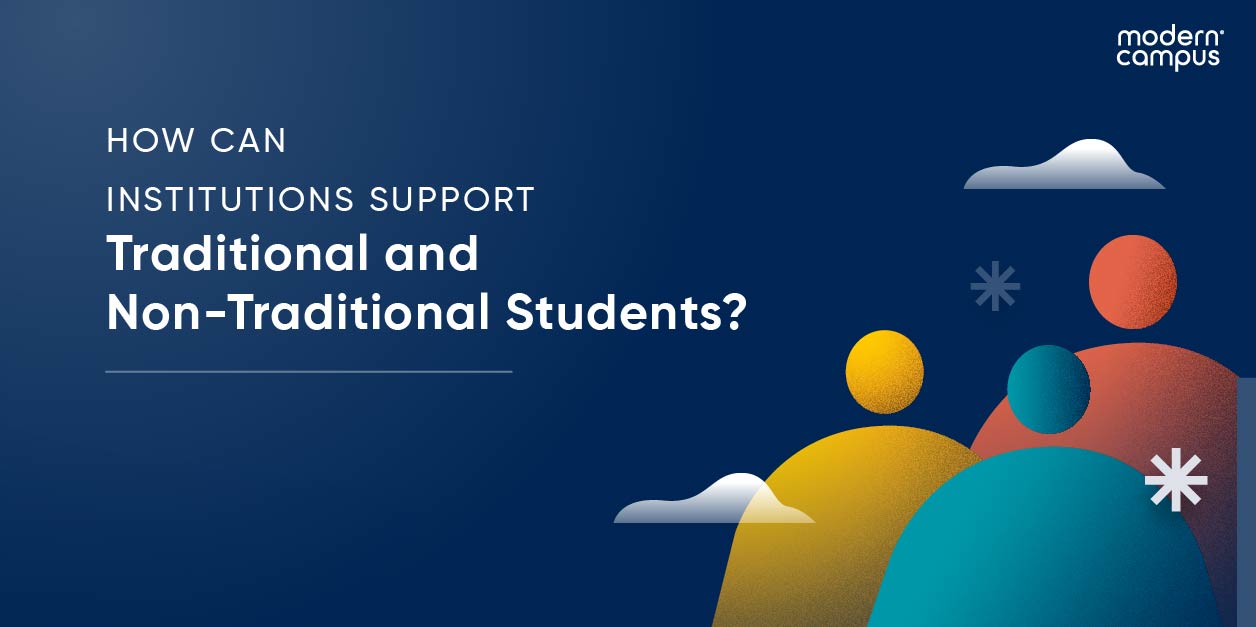Top Ways to Reduce Summer Melt in Higher Education
Strong admissions practices are crucial to the success of any higher education institution. However, attracting prospective students, reviewing applicants, submitting acceptance notifications, and soliciting students’ tuition deposits isn’t enough to guarantee a strong enrollment rate.
Colleges and universities also need those students to matriculate. Thus, they need to avoid Summer Melt.
What is Summer Melt in higher education?
The National College Attainment Network defines Summer Melt as:
“The phenomenon of college-intending students who have applied to, been accepted by, and made a deposit to a college or university, but fail to matriculate to that college (or any other) in the fall following their high school graduation”
A lack of mandatory institutional reporting makes precise data difficult to compile, but Harvard University’s Strategic Data Project estimates that 10-40% of college-intending students in the United States succumb to Summer Melt each year.
The U.S. Department of Education has found that the phenomenon is particularly prevalent among low-income students and those with historically marginalized identities (including Black and Latinx students) who were planning to enroll in community colleges.
What are the top causes of Summer Melt?
As we previously uncovered, there are ten main causes of Summer Melt. Typically, a student who “melts away” will do so as a result of not just one barrier but several compounding ones.
1. Lose of access to school counselors
Many students relied on high school counselors to guide them through the college research and application process. Without these counselors, who are typically unavailable in the summer, students often lack reliable resources for general advice, emotional support, and logistical guidance.
2. Lack of social capital
Social capital involves intangible resources that come embedded within interpersonal relationships or social institutions. Some students—such as those whose relatives graduated from traditional higher ed programs or who attend high schools wherein college attendance is the norm—are rich in social capital and exhibit clear college readiness.
But many other high schoolers—particularly low-income students—lack social capital, which may inhibit their enrollment. Without mentors to guide them, family members to inspire them, or community leaders to provide realistic expectations, students may struggle to enroll in their courses properly, apply for financial aid, or arrange affordable housing.
3. Overly complicated forms
In responding to a 2021 survey, 30% of both first-generation and low-income students said completing FAFSA was difficult. They cited a lack of parental support, difficulty acquiring tax information, confusing questions, income changes, and citizenship status as barriers.
Students may melt away because they are unable or too intimidated to complete FAFSA and other financial aid forms in the first place or because they fill out paperwork incorrectly, leading to a low award offer.
Forms related to a student’s medical and vaccine history, housing preferences, state residency, high school test scores, and more may also inhibit enrollment. To complete these forms, students have to contact medical professionals, research housing costs, secure proof of residency, acquire test scores, and deal with other logistics that may confuse or intimate them.
4. Financial concerns
After accounting for the cost of tuition, prospective students may feel blindsided by additional expenses like housing, books, and student activity fees. Students may also encounter unexpected financial challenges over the summer, such as losing their part-time jobs or acquiring medical expenses.
5. Logistical challenges
Barriers in a student’s personal life may arise over the summer that lead a student to worry about their ability to succeed at your institution. They may, for instance, lose access to reliable commuter transportation, acquire a part-time job with hours that seemingly conflict with class, or struggle with their mental health.
6. Missing email and snail mail
If your institution relies on email or postage mail to communicate, students may miss vital messages. Students may move and forget to inform the institution of their new address, lose access to email, or mistake your messages with spam. All of these occurrences can lead a student to miss crucial steps toward matriculation.
7. Worries about social fit
Incoming students may question their ability to form new social networks on your campus, especially if their current friends plan to attend different institutions. Students may worry about getting along with their roommates, finding like-minded peers, or engaging in social events.
8. Missing orientation
Students may not know that they have to sign up for orientation, they may struggle to find transportation to campus, or they may simply forget to show up—all of which can mean they’ll miss registration deadlines and miss out on access to essential social capital.
9. Concerns about academic performance
Students may begin to worry about their academic fit over the summer. They may become intimidated by course descriptions and syllabi, be disheartened to discover that they need to take remedial courses, or struggle to get through pre-assigned reading.
How to avoid Summer Melt?
Colleges and universities have found the following ways to reduce Summer Melt via early outreach.
1. Target financial barriers
To relieve students’ financial worries, colleges and universities should provide clear and early communication about financial aid packages, allowing learners plenty of time to evaluate their options alongside high school mentors before the school year ends. In addition to standard scholarships, institutions should assure students of options like emergency funding, free books and supplies, food pantries, reduced-cost housing, work-study opportunities, and flexible payment plans.
Institutions can also help students develop financial literacy skills over the summer via online workshops, personalized financial counseling, and Summer Bridge programs.
2. Simplify processes, procedures and forms
Institutions can make it quicker and easier for students to complete essential paperwork by providing user-friendly online forms that are mobile-optimized, allowing students to do all the work right from their phones or tablets. Clear instructions are also crucial; consider providing step-by-step guides that avoid jargon and break everything down into small, manageable tasks.
3. Personalize guidance
Offering students a go-to staff person for all their questions and concerns can help bridge the social capital gap and make up for students’ loss of access to high school counselors. Creating custom action plans—that outline specific tasks, deadline reminders, and resources relevant to the learner—can also reduce Summer Melt.
If assigning every accepted student an advisor or mentor isn’t feasible, institutions can focus on students who are most at risk for succumbing to Summer Melt: low-income, Black, and Latinx students. Needs assessment surveys can also help. Other support options include peer mentorship, first-gen student programs, family orientation, and online courses hosted by staff who can answer questions live.
4. Emphasize support services
By connecting students with campus and community support early and often, institutions can reduce students’ worries about succeeding academically, mentally, and socially within the high ed environment. This can include transportation services, academic planning and advising, career counseling, tutoring services, and mental health counseling.
Providing students with a central, online hub for reviewing and accessing these services in a wise, enrollment-boosting move. Hundreds of institutions have found their branded portals powered by Modern Campus Involve to be crucial in connecting students to student services alongside campus events and student-run clubs and organizations.
5. Embrace new communication strategies
Achieving a high matriculation rate requires reaching students with the right information at the right time. That’s why thousands of institutions are turning to text messaging campaigns.
By reaching students through their favorite mode of communication—their phones—you can build and sustain relationships with students over the summer, addressing any challenges that might otherwise cause learners to melt away.
As a means for offering students personalized advising, texting can drive many of the initiatives mentioned here previously. You can connect more learners to scholarship opportunities, promote enrollment resources, and run peer mentorship programs.
Texting is also an effective way to drive parent involvement, as families can be essential partners in increasing matriculation.
6. Leverage technology
Emerging technologies are helping institutions worldwide support incoming students like never before. Web content management systems make personalization a breeze, encouraging more students to leverage the resources built into your website. Maps and virtual tours help students get acquainted with campus before they even step foot there. Class scheduling tools allow students to easily find the 1-in-10,000-perfect schedule that fits around their other responsibilities.
Institutions that embrace such technologies show students that they’re willing to adapt alongside modern needs and interests.
Conclusion
Summer Melt is a complex problem. But by combining multiple solutions to tackle multiple barriers to student enrollment, colleges and universities are proving that it’s not entirely out of their control.
By receiving access to the right resources (which your institution likely already has in place), high schoolers can persist past challenges and successfully matriculate.
Texting the Summer Melt Away
How Text Messaging Can Increase Marticulation at Your College or University

Last updated: November 24, 2023




